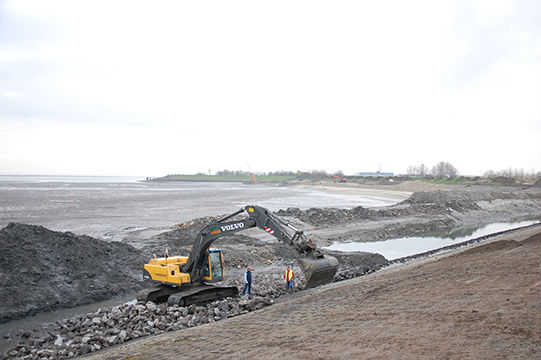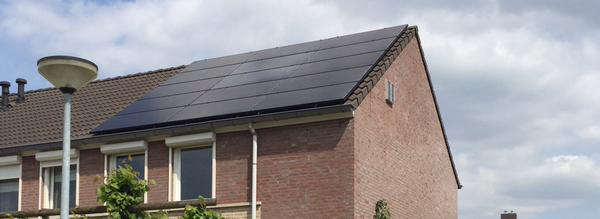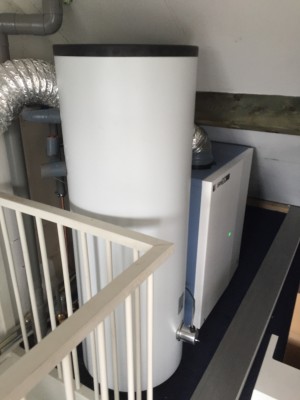 R744 is the refrigerant name of Carbon Dioxide (CO2), and is a natural gas which is all around us. In fact, we cannot live without Carbon Dioxide! As with anything, adding too much CO2 to our environment, while the demand of the natural use from nature, is rapidly decreasing by cutting down forests, also for the use of fire wood and fuel pellets, is becoming rapidly a problem.
R744 is the refrigerant name of Carbon Dioxide (CO2), and is a natural gas which is all around us. In fact, we cannot live without Carbon Dioxide! As with anything, adding too much CO2 to our environment, while the demand of the natural use from nature, is rapidly decreasing by cutting down forests, also for the use of fire wood and fuel pellets, is becoming rapidly a problem. 
The proof is all around us ( see picture above) even on our doorstep every day in many forms, and still humanity is not entirely convinced. Time is running out is often heard, lets take action etc. etc. etc.
Some of my thoughts in these are
Why did we ever stopped with sailing our goods over the oceans, using free and sustainable wind, and stopped a development which was already that far ahead, that it still can be, and is used today. If we watch the Volvo Ocean race, we can see the possibility’s, but why still use this for fun only in most cases? Why did we stop using wind for a lot of small propulsion needs like we did successfully in the middle ages? Of course the answer will be; industrial progress.. But was it really?……………
If CO2 is causing this much trouble, how to use the same gas, to build a solution against Global Warming?
Heating or cooling a building is done for years by adding heat, burning some kind of fuel, and cooling, by a refrigeration system taking out the heat of a building and throw it in the direct environment of the building (roof mostly). Creating and using energy, to throw away energy, is seen to be the “smart solution of the “intelligent” species called humanity. Most animals does far better than we do I can ensure you. They use insulation in most cases, and also the natural sources wind, and sun.
A heat-pump is Actually a refrigeration system, working the other way around. That simple, nothing more and nothing less. How it works its all in the name!
Heat-pump
It is designed to transfer heat from one place to the other, not to create heat. To take away the heat out of a product, and move it to the other. (Air or water are the most common products to “take out”, or “pump to” the heat). In order to transport the heat, we have to place it in a something which is able to take up heat, and deliver it too.

This something is the refrigerant, and is pumped around by the compressor of a heat-pump in a closed system. The amount of heat which is able to be transported by heat pump, depends on the amount of heat which can be put in to the refrigerant. And here is one the biggest benefits for using CO2 as refrigerant! It is able to contain, and transport a lot of heat in every gram. Test in practice showed it is the most efficient refrigerant (next to water, which can’t be used in practice because it will freeze below 0ºC/32℉) Also it is a natural gas, which is non flammable or aggressive, and even used as bubbles in drinks, and of course as a fire extinguisher .
CO2 therefore is the best refrigerant to use of all known, and was already, in the past refrigeration/heat-pump history sinds 1896!
But of course “smart” humanity thought it could do better than nature again! The CFC’s and HCFC’s were developed, with devastating results for our ozon layer!
The Use of R744 (Co2 Refrigerant) in Practice
There is already a lot of refrigerant installations build, with CO2 as refrigerant, and build to reuse the heat as much as possible. However most heat pump and airco systems suppliers do not, and are still holding on to technique with CFC’s which is in order to be phased out, even knowing that all the technique for using natural refrigerants, is available at the moment of publishing this article. Thermopunt Katwijk however is, although certificated to work with all refrigerants, using CO2 as main refrigerant, and was the first to install such a Heat-pump system in the Netherlands in a private estates home.

This was in April 2015, and now a year further it proved to be a system which is able to maintain comfort in a well insulated home also in winter, without any use of extra heat sources (Combined or so called hybrid systems) and is able to provide al heat and domestic hot water with a temperature of 65ºC even when it is freezing outside.

Also a benefit of CO2 comparing with other refrigerants, there is a bigger temperature difference possible between low and high temperature, than most of the other refrigerants. And less refrigerant needed, does mean a smaller system. Well, look at the picture’s of the system replacing a gas-heater in the Netherlands, all placed in a small corner of the attic. Also see : http://larsboelen.nl/2015/05/going-fossil-free-putting-my-money-whe-my-mouth-i All possible against a very reasonable price, and high quality. Of-Course it is also possible for systems with almost any demand, cooling, heating and or HVAC(Heating Ventilation Air Conditioning). For sport facility’s, elderly home’s, hospitals, low temperature heat recovery, also for industry, hotels, swimming pools, schools, and everywhere a possible solution for the need of lots of DMHW, and heating, using fossil free electricity from wind, water and solar power. Using those systems on bigger scale, can be helpful to release grids from overcapacity, and will ease the use of smaller local emergency power plants and still have comfortable heating and saving fuel.
www.thermopuntkatwijk.nl





1 reply on “CO2 as solution for heating, not as a problem”
Completely agree that traditional heating and cooling systems are not always the most efficient or sustainable solutions. Heat pumps are definitely a step in the right direction, as they are designed to transfer heat from one place to another rather than creating heat from scratch. They can be a more efficient way to heat or cool a building, especially when used in conjunction with insulation and natural sources like wind and solar energy. Overall, it’s important to consider more sustainable options for heating and cooling buildings in order to reduce energy waste and greenhouse gas emissions.